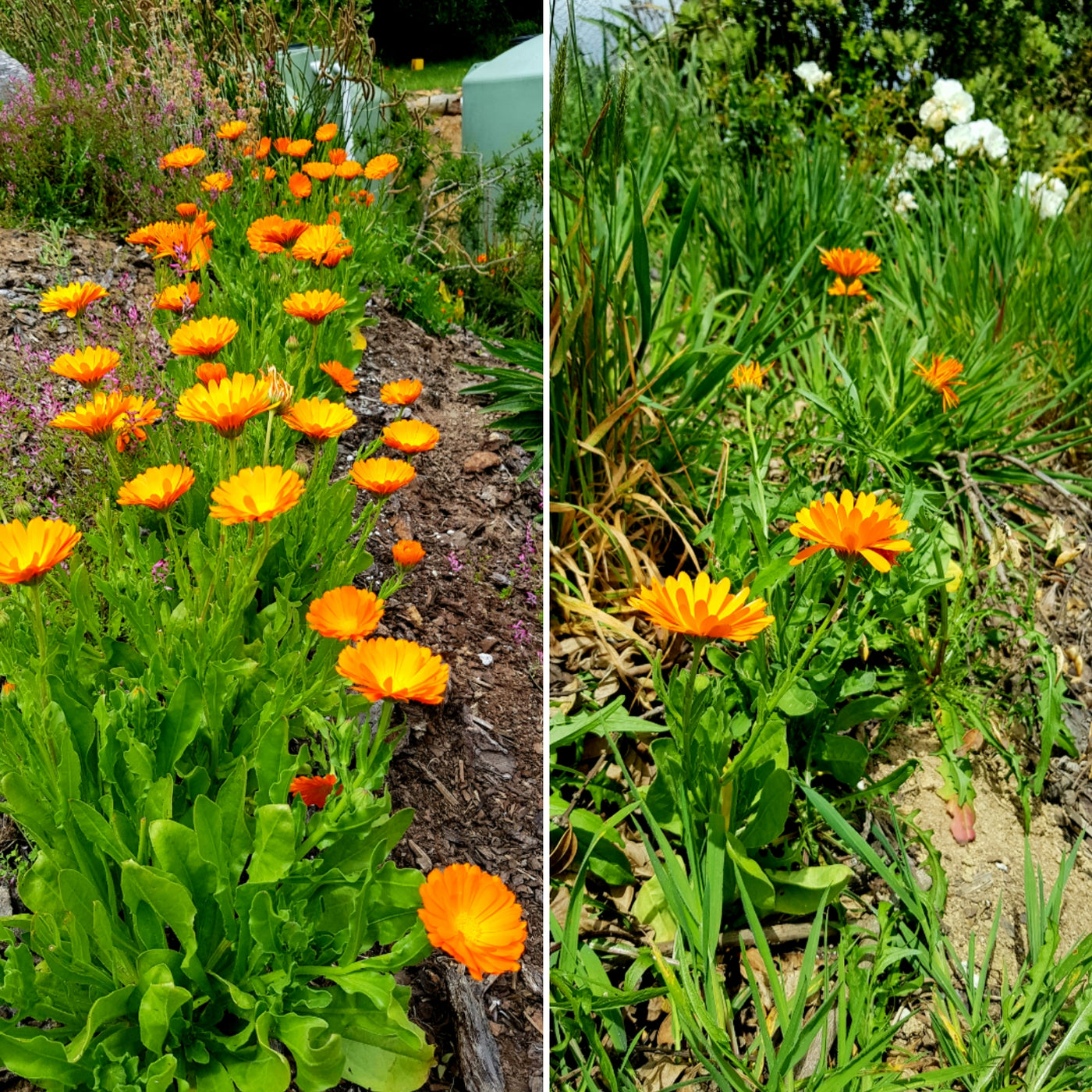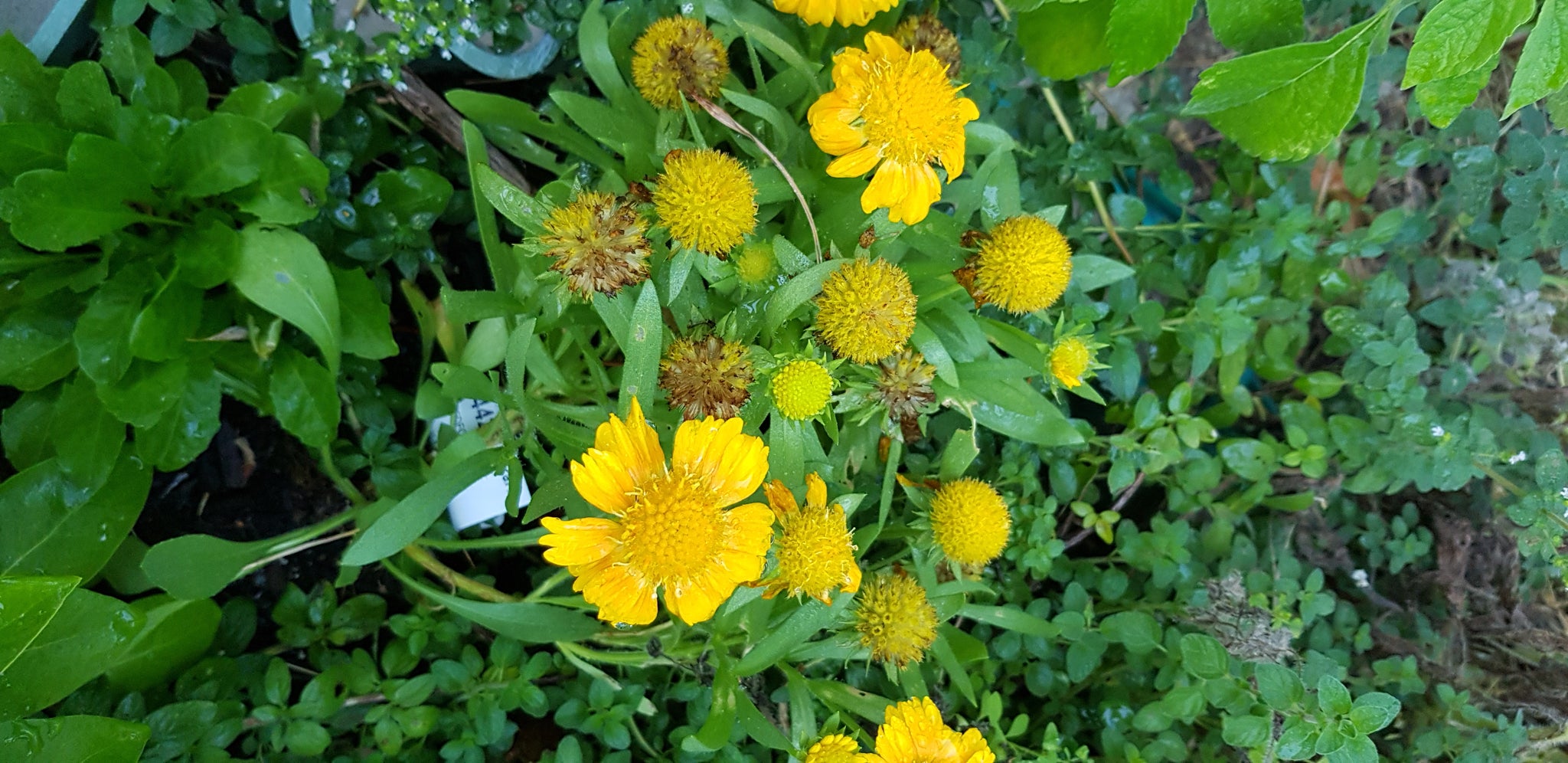
After moving to our new land with heads full of concepts and hearts full of dreams of a hilltop of herbs - we took stock, and started with the three basics of new gardens.
But after that was done...the gardens still couldn't be laid out. Experiments had to happen, so I knew how to make plants thrive naturally.
First, I had to understand the micro-climates. The land lies on a hilltop, exposed to all the winds that blow. Some from the sea, some from the interior. Plants have to fight the wind to thrive.
The sun hits at different angles on each slope. Some slopes stay cold. Some are always hot. Some are extreme in both directions.
The water (what there is of it) runs and pools and collects and ebbs in different ways.
So, to begin...I planted tough, cheerful, all-year-flowering Calendula in many places - and in each, it grew differently. The same age, the same inputs of compost, blood and bone, and lime: but see the variation above! Some are lush, some are stunted. Some flower well, some leaf well. Some struggle with insects and rust, some are untouched.
In some places, nearby trees send out growth retardants to discourage competition. Some areas are very acidic, due to seven years of pine bark mulch.
In some areas, the bare clay lies on the surface, and in others, pockets of sandy soil dry out in hours after watering.
The Calendula told me a lot. It helped me plan out a myriad small plots so that the herbs placed there would be in the right space to thrive.
Micro-climates exist even in a small backyard, and understanding them means a gardener can grow a wider range of plants.
But if you don't have them...they can also be created.

Stones block the prevailing wind, absorb heat, and hold moisture underneath, while planting in a hollow accentuates that, and catches runoff when it rains. Netting stops the rabbits from feasting. Together, they allow the Thyme plants to establish on an exposed slope.
And sometimes...the place where something must happen isn't optimal. The main gardens are planned for the largest flat space. The Big Flat (creative name, yes?) is exposed to the prevailing Westerly. It is baked by the sun all year. It consists of clay, with a thick layer of kikuyu. But here is where some beds must go.
The rough dream in my mind looks a little like this:

To the right, above the log, a Rosemary hedge will filter and bounce wind. Further down, on the edge of the Western Terrace, a Bay hedge will cut the first impact of the wind.
To the back, citrus will nestle in a sun-trap protected from the Southerlies.
Frames and structures will further break the wind, and provide shelter from the sun.
Raised beds will cover and soften the clay, allowing it to become a source of nutrients and hold water.
This won't happen this year. It will be barely underway next year. But for the dreams to come, accepting the reality that we have to build on must come first.


